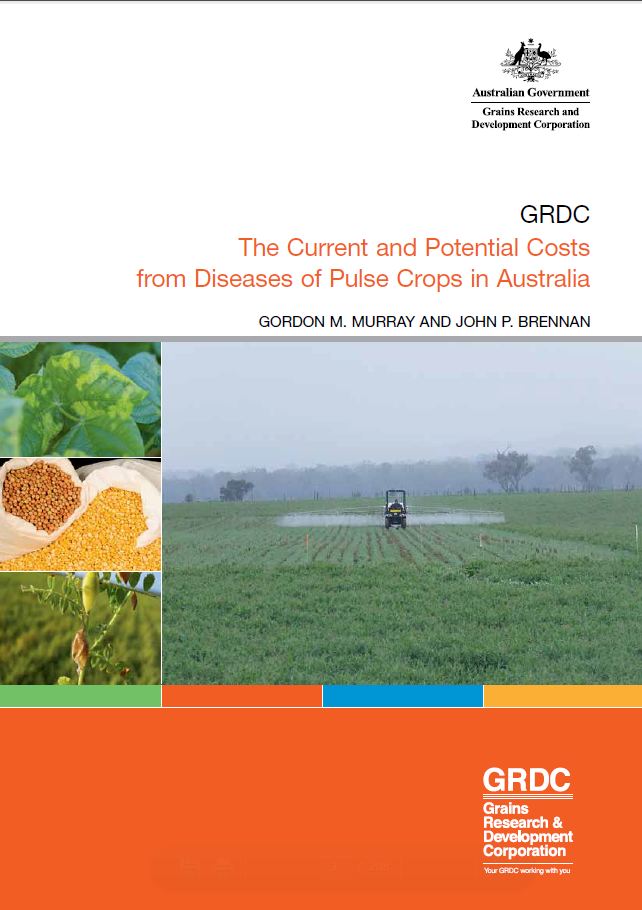The Current and Potential Costs from Diseases of Pulse Crops in Australia
The Current and Potential Costs from Diseases of Pulse Crops in Australia

The current loss from diseases in the Australian pulse industry averages $74 million per year, or 14.8 per cent of the gross value of pulse production. These losses are due to diseases caused by fungi, nematodes, bacteria, viruses and phytoplasmas. Losses would be far higher without the current range of controls, which include the use of resistant varieties, rotation, paddock management and the use of pesticides. The Grains Research and Development Corporation (GRDC) has supported much of the research and development of these disease controls.
The allocation of resources for the control of pulse crop diseases, both at grower level (when deciding whether to control a particular disease) and at the national level (when allocating funds for research and development) depends on an assessment of the losses caused by those diseases.
The pulse crops included in this study were narrowleaf and albus lupins, field peas, chickpeas, faba beans, lentils, vetch, peanuts and mungbeans. The disease losses to pulse crops are estimated from a survey of plant pathologists across Australia. An examination was made of the present costs of diseases and the potential costs if current control measures were not in place. The application and costs of pesticides applied to pulse crops for disease control were also estimated. These figures provide key insights into the importance of pulse crop diseases in Australia.
Region North, South, West, National
